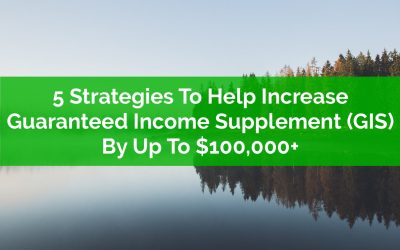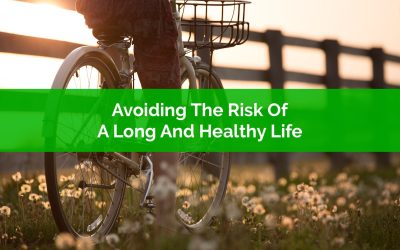Thank you for joining the waitlist!
You’re on the list for early access!
We will contact you via email when we’re ready for you to start your self-directed financial plan. In the mean time here is a quick preview…
Check out our latest blog posts…
5 Strategies To Help Increase Guaranteed Income Supplement (GIS) By Up To $100,000+
GIS (Guaranteed Income Supplement) is thought of as a government benefit that is exclusively for very low-income retirees, but the truth is that almost 1 in 3 retirees receive GIS benefits. This is a benefit that is widely available to retirees who are both low- and moderate-income.
GIS is a generous benefit. At a maximum it will provide over $10,000 per year per household. But this is quickly reduced by GIS clawbacks of 50% to 75%. For every dollar of taxable net income (line 23600 on your tax return), GIS is reduced by 50% to 75%.
For example, if you take $1,000 from an RRSP/RRIF then this would reduce next years GIS benefit by $500 to $750!
The challenge with the Guaranteed Income Supplement is that retirement planning with GIS benefits is very counter intuitive. Strategies that help reduce GIS clawbacks are often the opposite of strategies that help reduce income tax for higher income retirees. This can sometimes result in low- and moderate-income retirees getting advice that is not suited to their situation.
If not corrected in time, this bad advice can decrease future GIS benefits by $10,000’s or more.
For example, a client we worked with recently was advised to put $150/month into their RRSP despite being on disability benefits. This advice would have caused extra GIS clawbacks of at least $4,500 in retirement. From $9,000 in RRSP contributions, only half would end up in their pocket after considering GIS clawbacks.
Thankfully there are a handful of strategies to help reduce the GIS clawbacks… but these strategies require foresight. It’s best to create this type of plan in your 50’s, well before GIS benefits begin. The second-best time is in your early 60’s, right before GIS benefits begin. And the third-best time is between 65 and 70, when GIS benefits have begun but there is still time to make changes and maximize benefits. After age 72 there is less that can be done to reduce GIS clawbacks so planning ahead will pay off.
This type of planning can easily add $10,000’s in GIS benefits over the course of a plan and help make retirement significantly easier.
One of the reasons I love these GIS strategies is because they are specifically designed for low- and moderate-income households. We often hear about high-net-worth families employing teams of lawyers, accountants, and wealth managers to help them maximize their personal wealth. These strategies help low- and moderate-income households maximize their retirement income and could quickly backfire if used by anyone else.
Avoiding The Risk Of A Long And Healthy Life
There are many different risks when it comes to retirement, investment risk, inflation rate risk, spending risk, but one risk that isn’t talked about very often is the risk of living a long and healthy life. It may seem odd to call this a risk, but from a financial planning perspective, a long and health retirement can dramatically increase the risk of running out of money in the future.
According to the guidelines from the Financial Planning Standards Council of Canada, for a couple who is currently 55, there is a 25% chance that either partner in a couple will live to age 98 and there is a 10% chance that either will live to age 101.
Living a long and healthy life isn’t some obscure risk… for pre-retirees the chance of living into their mid 90’s is around 25%!
This risk becomes even greater for those aiming for early retirement in their 50’s or even 40’s. Retiring at age 55 could mean a 43+year retirement period for 1 in 4 couples and a 46+ year retirement period for 1 in 10 couples.
With such a long retirement period, and such a high possibility of reaching age 90+, we want to ensure that we’re taking steps within our financial plans to avoid the risk of a long life.
There are a few things that anyone can do to avoid this risk…
How To Build a GIC Ladder Into Your Portfolio
With interest rates higher, GICs have become more attractive as an investment option and a 5-year GIC ladder can be a great addition to your portfolio. GICs can be considered part of your fixed-income allocation and in some cases GICs can even outperform bonds of equal length.
If you’re adding GICs to your investment portfolio then you’ll want to consider building a GIC ladder. A GIC ladder is a common way to invest in GICs.
When investing in GICs, a GIC ladder can help take advantage of the benefits of GICs while reducing the downsides.
GICs are typically locked in for a specific term. This could be shorter-term like 90-days or longer-term like 1-year, 2-years, 3-years, 4-years, 5-years etc.
Laddering GICs will help take advantage of longer-term GIC rates while also improving liquidity with some shorter-term GICs.
When a GIC ladder is working well, there will always be at least one GIC maturing every year which can then be used to purchase a new longer-term GIC. Here’s why you may want to set up a GIC ladder and how to do it…



